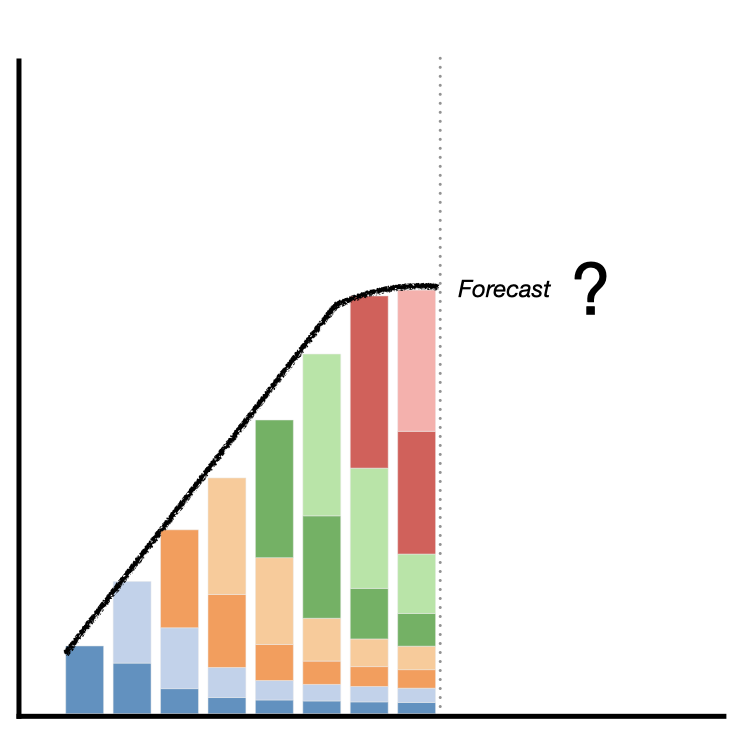by Trey Pruitt

I see the following situation all too often with clients. Things go great for a while. The company grows rapidly, principally through new customer acquisition. However, new customer growth slows down and fewer new customers are acquired each month. As a result, sales flatten out. The company believes that revenue is stable and with some minor changes, growth can be restarted.
However, the customer cohorts tell a different story.
I've been working with companies in finance and analytics for the last 20 years. Here's a story that I've seen many, many times: my client is a self-serve B2B SaaS or direct-to-consumer business. Sales have been growing very rapidly. So far, so good, but then sales start to taper off and flatten out. The question is, what's going to happen next? How much sales will the business generate in the future? The company looks at the trend line for sales and thinks, "Okay, the base case is probably that sales will flatten out in the near future. An upside case is that we will reignite growth." That seems reasonable when we look at the top-line trends.
However, when we dig a little deeper, another story emerges. We see that sales growth has been driven by new customer acquisition, and recently that new customer acquisition has been declining. We also notice that the customer journey from acquisition through retention follows a very predictable pattern where churn in the beginning is quite high and then flattens out over time. This is very typical of high-velocity SaaS and direct-to-consumer businesses. This means that customer cohorts churn off in a predictable pattern. When we overlay each of the cohorts based on the time period in which they first became customers, we see that they decay in a predictable way. When we run out the cohorts using the customer acquisition trends and the retention curves, we see that the likely case is not that the business will be flat, but in fact, will decline in sales. That's the expected case, and unless we make changes either to new customer acquisition or to the retention curves, then that's what's going to happen with the business.
At this point, now that the company knows what's likely to happen, there are two choices: either they can ignore this and hope for the best, making some changes around the margin, or then can confront the reality. What I find typically happens when companies ignore the facts of their cohorts is that they end up chasing the ball down the stairs. Every couple of quarters, they reduce staff and cut expenses, and the business just keeps declining. This is because they haven't made changes to the fundamental economics of the business. The other choice is to realize how the business actually performs at a fundamental level with the new customer cohorts coming in and make changes to the business, either by increasing new customer acquisition, finding customers that have better retention curves, and upselling customers over time. These are the drivers that a company can affect that will reignite growth.